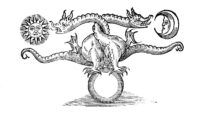We tend to think of life in Euclidian terms, that is to say, straight lines between points A and B, negotiating space and time using the geometry of fixed shapes. Sure, we negotiate curves every once in a while, but even those we like to describe as smooth, dramatic arcs in an otherwise straightforward story line. We view the bumps of sudden and harsh disruptions in our lives as aberrations in an otherwise predictable and consistent experience, generally relying upon our sense of continuity to fill in the ruts and potholes of life. Our plans, habits and routines are built upon assumptions of a stable ground of day-to-day living, as if the world is a featureless, two-dimensional plane upon which we simply attach the predictable perpendicular character of our lives.
Reality is otherwise. We inhabit an irregular universe of non-Euclidian geometry characterized by an endless succession of unpredictable bumps, gaps, peaks and valleys. In this sense, life is better described as fractal, the organization of intermittent and temporary recurring patterns of order arising within the turbulence of chaos. In a physical sense, this is accurate; the objects we perceive as smooth are shown to be otherwise when examined closely.
For example, the earth appears smooth and round when viewed from space, but when viewed from its surface, it is revealed to be irregularly featured – with towering mountains, vast plains and deep valleys. So it is when we magnify the surface of an orange or a peach. What we take to be a featureless, regular geometry is actually a rough boundary interface of endlessly smaller pits and valleys, right down to the tiniest atomic particles. Accordingly, measuring absolute circumference is not possible and is dependent upon the precision of our tools of measurement. As such, a fractal view illustrates the paradox of “beingness” that allows an infinite distance to exist within a finite shape, including us.
In a metaphysical sense, our pattern of existence mirrors the physical pattern of fractal geometry. Our days are finite, yet our actions, thoughts and deeds are unconfined and infinite. Out of the natural disorder of an inconceivably complex system we create recurrent patterns of cultural, behavioral and social forms that allow us to conduct our lives and generate somewhat predictable outcomes. Within the actual chaos of the universe, we inhabit a brief self-replicating fractal island, which appears to exhibit Euclidean-like stability. We negotiate our lives and make plans within a cognitive and cultural framework that exists as a mere membrane upon the surface of a chaotic reality subject to incessant change and dramatic upheaval. This is the actual ground of our existence as human beings, not the featureless plane of flatness we imagine; thus we experience hope and fear, joy and sadness, suffering and pleasure.
Viewed against the backdrop of economic and social turbulence, environmental climate change, illness, accident and natural disaster that comprise the workings of the world, our Euclidean habit of attempting to impose order may seem foolish. Yet, as thinking and feeling beings we cannot do otherwise. The economy may tank, our crops may fail, our loved ones may suffer, but this is the nature of reality. Ultimately, all we have and have ever had is each other, and we alone are capable of intentionally bringing compassion and love to a chaotic world.
We welcome your feedback. For general feedback or to contact one of our columnists, please visit the Contact the Columnists Page at www.sonomasun.com.
Bumps in the road
More from Public CitizenMore posts in Public Citizen »




